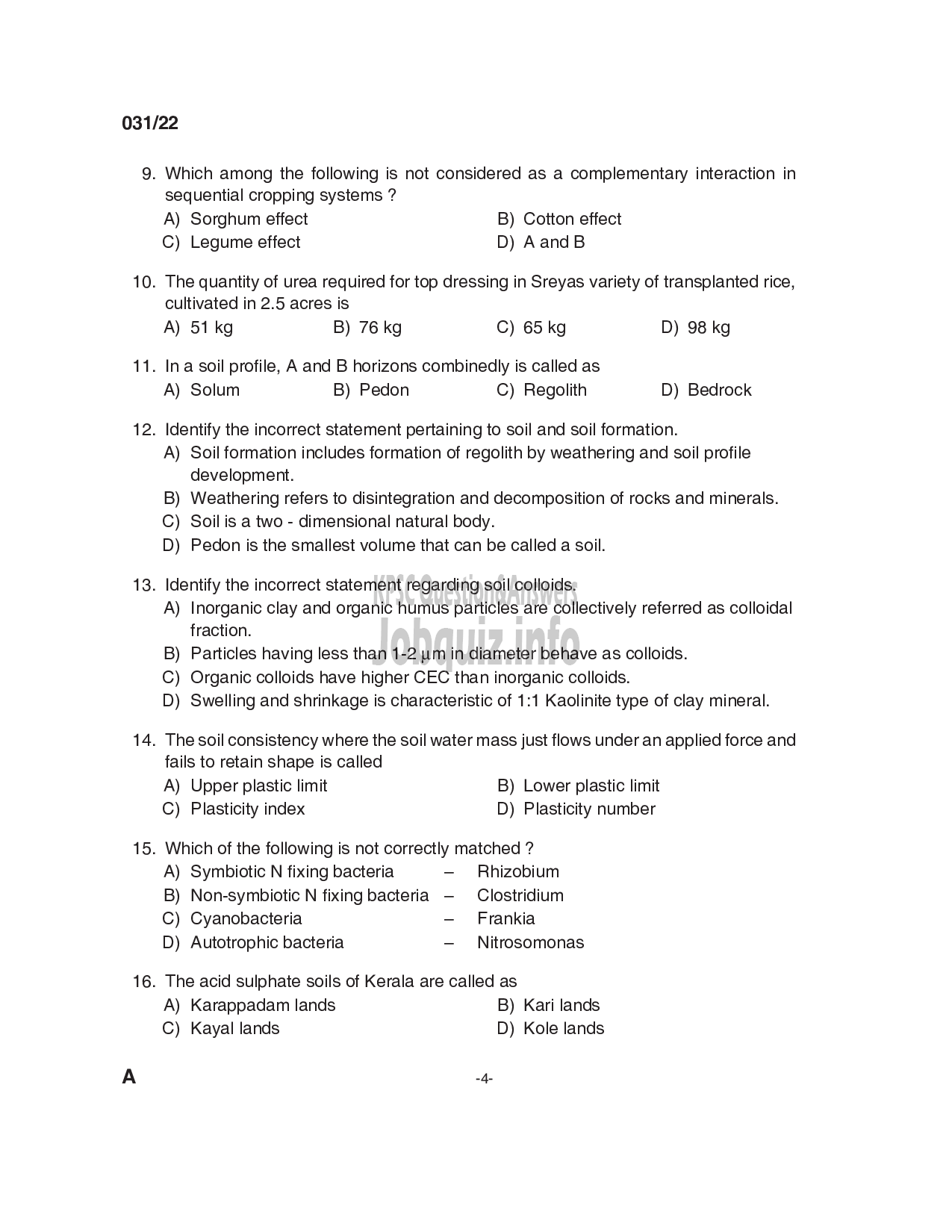Kerala PSC Previous Years Question Paper & Answer
Page:4
Below are the scanned copy of Kerala Public Service Commission (KPSC) Question Paper with answer keys of Exam Name 'Agricultural Officer/ Soil Survey Officer - Kerala State land Use Board/ Agriculture ' And exam conducted in the year 2022. And Question paper code was '31/2022'. Medium of question paper was in Malayalam or English . Booklet Alphacode was 'A'. Answer keys are given at the bottom, but we suggest you to try answering the questions yourself and compare the key along wih to check your performance. Because we would like you to do and practice by yourself.
031/22
9. Which among the following is not considered as a complementary interaction in
sequential cropping systems ?
A) Sorghum effect B) Cotton effect
C) Legume effect D) AandB
10. The quantity of urea required for top dressing in Sreyas variety of transplanted rice,
cultivated in 2.5 acres is
A) 51 kg B) 76 kg ©) 65 kg 0) 98 kg
11. Ina soil profile, A and B horizons combinedly is called as
A) Solum B) Pedon C) Regolith D) Bedrock
12. Identify the incorrect statement pertaining to soil and soil formation.
A) Soil formation includes formation of regolith by weathering and soil profile
development.
B) Weathering refers to disintegration and decomposition of rocks and minerals.
C) Soil is a two - dimensional natural body.
D) Pedon is the smallest volume that can be called a soil.
13. Identify the incorrect statement regarding soil colloids.
A) Inorganic clay and organic humus particles are collectively referred as colloidal
fraction.
B) Particles having less than 1-2 um in diameter behave as colloids.
C) Organic colloids have higher CEC than inorganic colloids.
D) Swelling and shrinkage is characteristic of 1:1 Kaolinite type of clay mineral.
14. The soil consistency where the soil water mass just flows under an applied force and
fails to retain shape is called
A) Upper plastic limit B) Lower plastic limit
C) Plasticity index D) Plasticity number
15. Which of the following is not correctly matched ?
A) Symbiotic N fixing bacteria — Rhizobium
8) Non-symbiotic N fixing bacteria - Clostridium
C) Cyanobacteria - Frankia
D) Autotrophic bacteria - Nitrosomonas
16. The acid sulphate soils of Kerala are called as
A) Karappadam lands B) Kari lands
C) Kayal lands D) Kole lands
